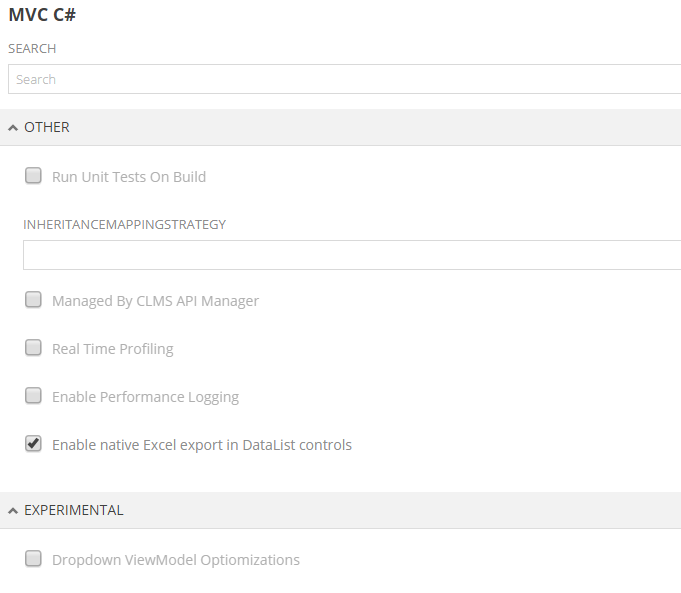Implementation Strategy¶
Introduction¶
In this section you can read an architecture diagram and configure settings that the selected Implementation Strategy offers.
Overview¶
Every Implementation Strategy is based on a specific set of languages, frameworks, tools, practices etc. The implementation overview briefly describes the basic elements of the generated application in an hierarchical order, providing links for further information.
Settings¶
These are settings exposed by the selected Implementation Strategy. They may be different among the various implementation strategies and they are prone to change as a strategy is updated (e.g. Experimental Features become standard)
Tip
Inheritance Mapping Strategy is the Implementation Strategy that defines how your Domain Model is mapped to the Database as far as the inheritance is concerned. The default Implementation Strategy, that you will most probably use, supports the following values for this property:
TablePerClassHierarchy¶
SubClass and all SuperClasses are mapped at the same table (needs a discriminator column per subclass).
THIS IS THE DEFAULT OPTION, USED WHEN NO (OR INCOMPATIBLE) VALUE IS PROVIDED
TablePerSubclass¶
Each class is mapped to a separate table. Subclasses have primary key associations to the superclass table (one-to-one relational model association)
TablePerConcreteClass¶
Each Subclass is mapped to an independent table that includes the Superclass's properties/columns. Superclass does not have a separate table. Its properties are mapped to all the tables of the subclasses.
Warning
To configure options concerning the Deployment Environments, refer to this

